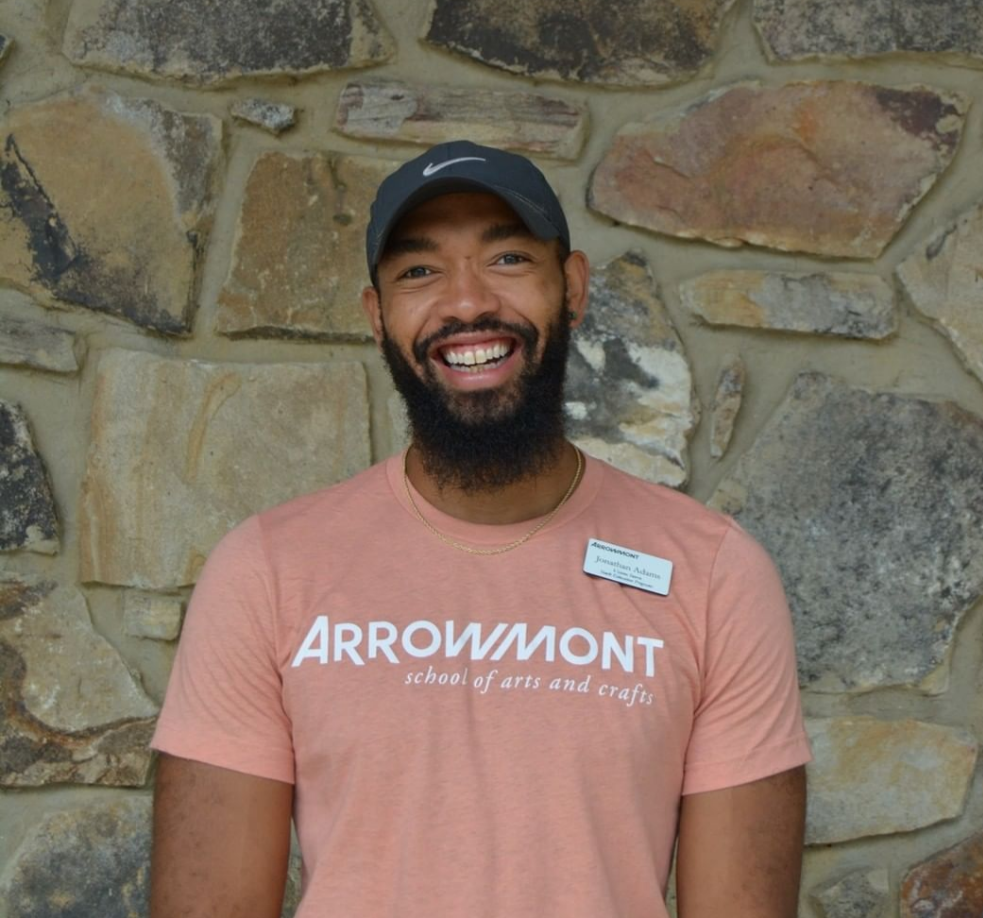

Jonathan Adams
Jonathan Adams, Johnson City, Tennessee, became involved with art as a child.
“Wonder/curiosity inspires the direction of my art’s practice. Drawing is how I understand the world around me. As a practice, drawing serves as a therapy and ideation tool; I wouldn’t be the person I am today without art in my life. The influential people in my life begin with my grandmother Hazel Adams, who introduced arts and culture to me as a child. I carry an abundance of gratitude for her. Artistically I draw from artistsKara Walker, Honoré Daumier, SesshuToyo,Takehiko Inoue, Angela Dufresne and Giovani Tiepolo. The list grows everyday.
“I focus on line variation primarily with layers of tone when creating work. If I was to have a style, I would consider my work expanded drawing. It feels part-way into traditional drawing as much as or between other disciplines. However, the main factor is that drawing, observation/seeing is one and the same. Drawing is the foundation, point of jump or a projected grasping for me,” he says.
Adams’ “From These Hills” haunting pieces represent the turbulence, the mud and fog, the twists and turn of contemporary black life after death.
“The pieces reflect my experience growing up in Appalachia. I have such a soft spot for my hometown of Bristol and the rolling hills that surround it. However, there aren’t many people of color and poverty runs in my family dynamic. These are things that I have experienced yet hold no animosity for. Through drawing I began to understand that differences are chosen or just built differently. There’s nothing to figure out, I just needed to respect and accept those differences. In saying this, as a person of color in a predominantly Caucasian region, bigotry and class embarrassment feel like the Boogeyman. My siblings and I were raised primarily by my grandparents who lived during desegregation and the civil rights movement.
“Building trust is difficult. Widespread overt discrimination existed in their lifetime. We were only a generation removed. This perspective lets me know how far we’ve come as a nation but also, how much work is required in imagining a new America. Earlier this year I had the pleasure of serving on a panel where the topic was‘Mixed Race: Negotiating Shifting Identities,’ moderated by Adam Dickson hosted by the Langston Centre. I was speaking on the ideals we could strive towards. America is a melting pot as I mentioned. I’m paraphrasing, Dickson responded with‘I believe that America is less a melting pot and more of a tossed salad. We live together yet stay within boundaries.’
“This stuck with me because the structures of a compartmented system and melded integration are wildly different. What is America and how do its social structures operate? Racism will always be a topic as long as there is a difference among people.
“People of color in America are cognizant or experience racism at mundane moments. Some people aren’t thinking about racism when you’re getting your coffee or pumping your gas. However, as people we have to be aware of our surroundings and learn that people around you should feel safe. The pieces shown are moments in my life that I have felt unsafe, watched or hidden. They were terrifying and still are today,” he says.
Adams earned a BFA from East Tennessee State University, Johnson City, Tennessee. He received a MFA from Rutgers University’s Mason Gross School of the Arts.
“I began my training with my grandmother’s art books and utilizing Books-a-Million the year it was brought to Bristol. This is how I usually work. Dense layered drawings, usually monotone with accent colors here and there. I believe the only problem with creating my artwork is time. There’s never enough. I require undisturbed wall space so all of the work can remain together. This keeps them all visually similar,but it’s a beast setting up, working, then cleaning it all away. By this time, I’ve spent approximately two hours cleaning and two hours working, when ideally having the work remain set up grants me four hours of work time. At the moment, I don’t have those conditions, so my work has been changing in beneficial ways recently,” Adams says.
He was the inauguralArrowmont Visions Intern at Arrowmont School of Arts and Crafts and participant inthe Drawing Center Viewing Program 20/21. He was an artist in residence at the Chautauqua School of Art and the Virginia Center for Creative Art. He exhibited at “B20:Wiregrass Biennial” by the Wiregrass Museum of Art in Dothan, Alabama, and studied with Kara Walker for “The Colossus of Rutgers”show at the Brooklyn Army terminal in New York City.
“I believe creativity is something everyone uses daily and is crucial to the human condition. Creativity is a unique pathway formed and/or an original idea. Everyone 24/7 does something creative which is usually minimized by that person. This happens through comparing themselves to a lofty idea or another person. When what they do may be a unique pathway created simply in living. It could be as simple as finding another way to shave five minutes off your commute. It may be small, even specific to you, but it’s a creative and important act.
“I have been looking for ways to show gratitude and explore hope in this area. I would like to be a part of the change of highlighting arts communities, hidden narratives or telling someone’s story. Particularly in Appalachia, it’s such a rich culture and full of unique lives. My father immigrated to America in the ‘80s from Cuba and found my mother in these foothills. How can I show that gratitude for them and showcase their plights? Moreover I would like to tell stories about other people of color or illustrate their narratives within the mythologized world I’ve created. If you’re a POC in Appalachia please contact me at jadamsdesigns05@gmail.comor my website www.thejonathanadams.com/contact,” he says.